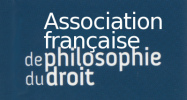Paper's abstract
Bernard
Reber,
Bioethics in enlarged conferences. What quality for the assesment?
The regional citizens’ forum, a kind of consensus conference, constituted the high light of the Etats Généraux de la Bioéthique. Their first aim was to produce via pluralistic panels of French citizens a sensible and well-thought out content which was to allow all decision-makers to go deeper into the matter of the legislative evolutions necessary to bioethics. It is the first time that such a revision is entrusted to a wide circle of experts as well as ordinary citizens, trained for the occasion on the ins and outs of these ethical and technical issues. How then is one to assess this unusual experiment that submits the bio-ethical discussion to the rules of public debates? This paper intends to go beyond the contextual problems encountered when establishing this experiment and a proce-dural assessment, which would only be concerned with the political rules facilitating the cooperation between the involved actors. How did the EGB, in the detail of their proceedings and their course, treat the normative and “factual” dimensions at play in the notion of bioethical laws? Whereas some political normative theories induce to argue, here I raise the underdetermination of this communicational ability in these theories and the added difficulty of argumenting in an interdisci-plinary context. The results show issues in the notifications of experts and the fact that implicitly, ethics are not recognized as an expertise. Well before arguments are required, the need to answer the questions asked by citizens is already a problem.
Beyond the EGB, what is at stake here is to offer a secondary quality assessment in the Participatory Technological Assessment, which does not satisfies itself with a more participative democracy but also takes an interest in the bioethical specificity of the debates.
Key Words : Public debate – participative technological assessment – pluralism – deliberative democracy – argumentation – fact/norm dicho
t. 53, 2010 : p. 332-365
